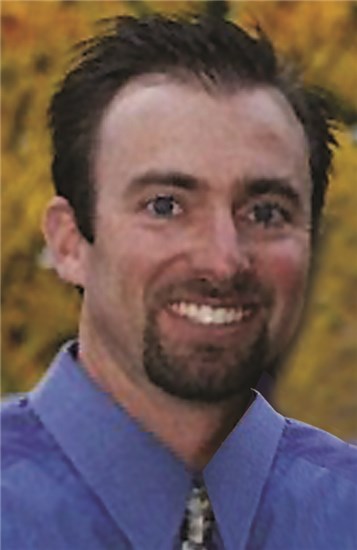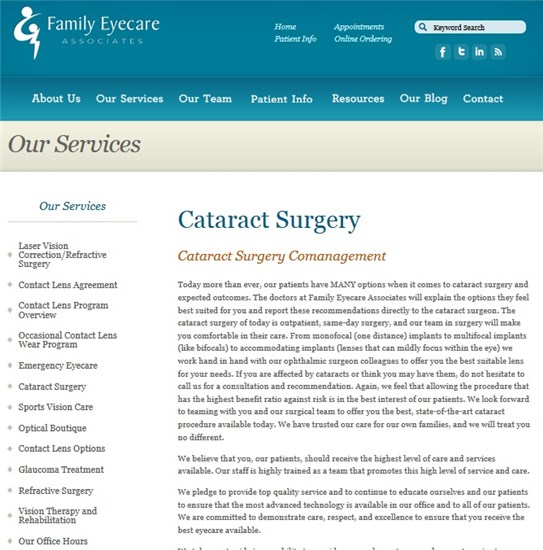By Troy Humphreys, OD, FAAO
June 15, 2016
SYNOPSIS
Success at medical model optometry requires that you build consult and referral relationships with local MDs and DOs. Here are strategies to make those vital relationships work both ways.
ACTION POINTS
COORDINATE CARE. Meet MDs and DOs through coordinated care and meet them outside the practice for dinner meetings at least once a year.
ENSURE PATIENT RETENTION. Clarify duties to ensure that your patient returns to you for primary care.
OBSERVE SURGERIES. Learn how surgeons educate/discuss cases with patients, and then try to coordinate your educational discussions with patients.
My practice provides full-scope medical eyecare. While we handle a wide range of conditions,there are times when we need to send patients to a surgeon for a procedure like LASIK. For that reason, we have built relationships with MDs in our community, who we send patients to whenever necessary. This reciprocal relationship enables us to build our practice by retaining patients.
For 90 percent of our consults, we have a relationship with several major MD practices. These practices include:
Refractive/cataract center. This practice has two MDs who have expertise in all refractive procedures including LASIK/cataract extraction/Kamra/PRK, etc. Their third MD is a corneal fellow who is an expert in penetrating keratoplasties, corneal crosslinking and all corneal disease.
Retinal practice. We have a great relationship with two major retinal practices that both have fellowship-trained retinal surgeons for all retinal complications and surgery.
Oculoplastics surgeon. The MD and his team perform all of our oculoplastics needs for our patients.
The page on Dr. Humphrey’s practice web site devoted to cataract co-management. Dr. Humprheys says building relationships with surgeons in your community enables you to keep patients in your practice, and to offer patients a seamless treatment experience for procedures like cataracts and refractive surgery.
Coordinate Care & Take Time to Get to Know
We initially met all of our specialist colleagues through coordinated care that occurred, and always try to meet them outside the practice for dinner meetings at least once a year. ?This allows us to make sure they understand our role and backgrounds/comfort level, as well as getting to know them as individuals who care for our patients as a team with us.
We also look at the MD’s training and get viable recommendations from colleagues in the community to ensure their care is outstanding and patient-centered.
Observe Surgeries
I personally strive to scrub in with our ophthalmic surgery colleagues once or twice a year, especially the surgeons who perform our major management surgeries: cataracts/LASIK/ICL. Our surgical colleagues greatly appreciate this, and during cases we pick each others’ brains to ensure we are managing cases to the utmost of our ability as a team.
I often learn, as well, how surgeons educate/discuss cases with patients, and I then try to coordinate my educational discussions in a cohesive manner as to make the patient feel comfortable and perceive a very smooth transition in our care.
Educate MDs About Your Practice
We educate all of our MD colleagues about our practice.We explain that we perform full-scope optometric service, and that we like a team approach to care to improve the outcomes of our patients. After meeting with us outside of the clinic, all our MD colleagues feel very comfortable with us and our abilities.
MDs are aware of the scope of optometry, but not all ODs practice to the extent of their scope, so ophthalmologists must learn which ODs are comfortable and appropriate to fully manage medical patients. The same thing happens in ophthalmology–there are different skill sets and some OMDs do not perform any surgical care.
Send Full Reports to MD
We always send a full report of our examination findings to the MD, and the service we request. This report includes all of our diagnostic testing, such as OCT/fundus imaging/Orbscan, etc. This assists the ophthalmic surgeon in efficiently coordinating care for the patient and taking the next step in a more concentrated fashion. We often will, as well, via cell phone, contact our surgical colleagues and discuss cases, especially in urgent situations like retinal detachments.
We like to see the operative report (or summary of the report), along with the one-day post-op if they have performed it. This allows us to know exactly what was done so we can smoothly take over the care of the patient.
Educate the Patient
We always try to express to the patient that the ophthalmic surgeon we are sending them to is an excellent doctor and person; I often relate that many of my family members (including myself) have had ophthalmic surgeries with many of our ophthalmic surgeon colleagues.This is very important and comforts them in the transition. l also try to let them know about wait times that may be excessive (especially in emergency situations) so they can prepare for that and know that it is a normal part of getting right into an excellent surgical colleague.
Most of our consults are for surgical care, as all other care occurs in our practice. With this in mind, I explain that our surgical team will initially evaluate them like I just did to render a second opinion (which usually matches) and then proceed with surgical care. I explain that I am happy to manage their care after surgery if this is their wish, and that we are very well suited to care for them in the post-operative period.
Co-management has to be chosen by the patient, and approved first by the surgeon, not the optometrist, and we can never coerce the patient into post-operative care in our practice. By educating the patient that we often provide this service, however, we have a high percentage of patients that elect us to perform their post-operative care.
Gauge Patient Feedback to MDs & Act
I will often decrease, or end, consults to an ophthalmic surgeon when I hear continued frustrations from patients about the bedside manner, or challenges in personalized care, for our patients. I believe that patients come first and that all patients should be treated with care and human dignity. This is the biggest reason why my consult pattern changes; patients and excellence in care must come first!
Troy Humphreys, OD, FAAO, is the owner of Family Eye Care Associates in Sparks, Nev. To contact: drthumphreys@familyeyecareassociates.com


























